It’s exciting to see more & more people starting to ride motorcycles and going on roadtrips either on their own or with buddies. Mostly when people start riding, they may know very little about how to start riding comfortably on slightly longer roadtrips apart from just the city riding. As they continue riding, they make more & more likeminded riders & learn a lot from them & their riding style. This little compilation is aimed to help those who are just starting out & is from a personal learnings & perspective of a relatively new long distance motorcyclist so should be helpful.
1. Choose a comfortable bike
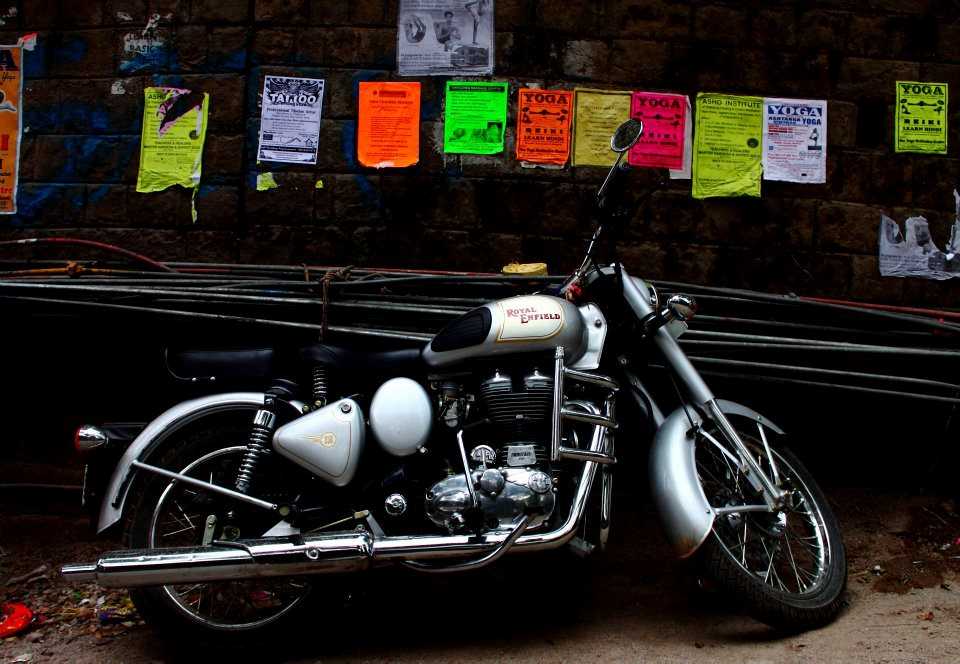
Whatever kind of bike you choose, you must always be comfortable with it. In case you zero in on a bike that needs certain modifications to ensure it’s comfortable for you to handle, get it done immediately. Some common changes that riders make is getting a different handlebar, a more comfortable seat, guards, better headlights if they are going to do lots of evening riding, a new exhaust, etc. Remember, it’s not just about looking cool on the bike, but also riding it well.
2. Dress to ride
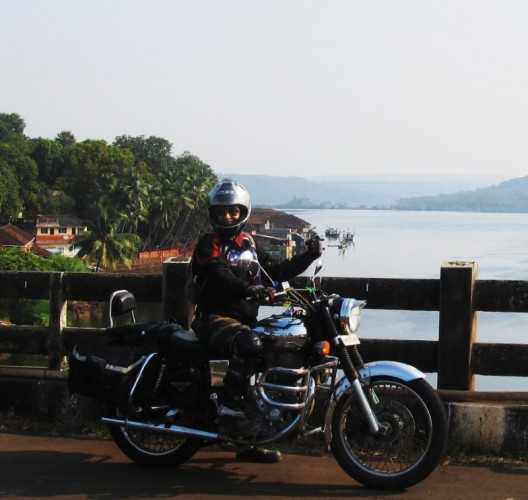
For long distance riding, always try & wear riding pants, ankle boots (safety shoes can be a substitute), riding jacket & of course a full face helmet. Or there is the option of knee & elbow guards or body armor. Motorcycling gear can easily be bought online or in moto stores. Try to get as close a size as possible, lose & baggy gear or clothing will only be a disturbance & cause discomfort. When completely geared up, you might feel heavy & awkward at first, but once you get on the bike, knowing that you are riding safer will make your riding more fun & give you greater confidence. Plus you get more of the biker feel on a lighter note.
Wearing a riding jacket, canvas trousers & knee guards instead of riding pants temperatures
3. Don’t over pack, pack light
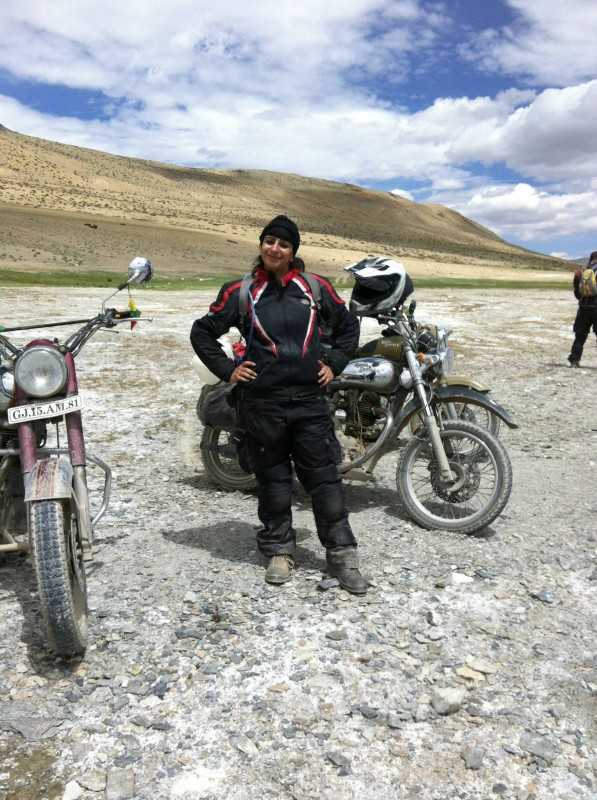
There’s a brilliant range of motorcycle luggage available in the Indian market to choose from- starting from metal to soft textile luggage. There are saddle bags that you can harness on the back seat of your bike, tank bags which magnetically hug your tank & can carry lighter stuff, tailbags that can be bungeed to the back seat, etc. These too are available online or in moto stores & come in different sizes & styles to suit your bike kind. When packing, make sure to carry as much disposable stuff you can which can be used & discarded. This will help you cut down on a lot of weight as you travel. Eg – instead of shampoo bottles, carry sachets; carry small soap bars, disposable toothbrushes which you can do away with on your ride back. Don’t unnecessarily carry a lot of changes of clothes, instead try & wash & reuse your clothes. My favorite motorcycle luggage comes from Dirtsack in India. Give the DSLR a miss & carry a digicam if you have one, which can be put in your pocket instead of packing it up in the luggage & taking it out every time you want to take some photos. Don’t fold your clothes – roll them, they take up less space that way. Essential medicines are a must.
4. Stay hydrated
A lot of people do not pay attention to the water factor on a motorcycle roadtrip. Invest in a hydration pack which is basically a water bottle in a bag with a tube which you can sling over your shoulder & drink water from without needing to take off the helmet or even stopping. Keeping yourself well hydrated throughout your ride will save on all the exertion due to dehydration. You can even add some glucon-d or Gatorade to your water if you want. A 2 liter pack is enough for a day’s ride & can be refilled if need be. Make it a point to drink some every time you stop (even if you don’t feel thirsty).
5. Know Your route
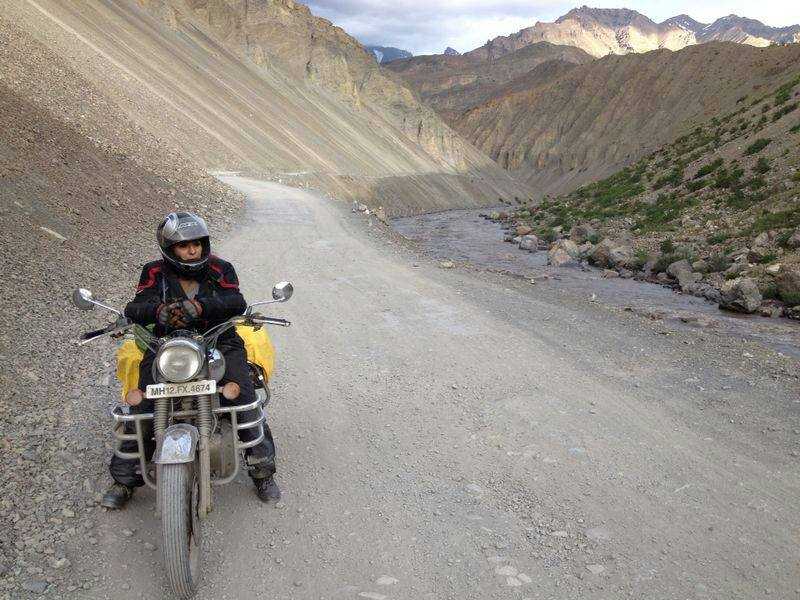
Not all of us are genius with directions & remembering roads, but having a fair sense of which direction you are headed in & what route you are taking helps to avoid wasting time getting lost. Try & carry a screenshot of the map on your mobile or a printout of the same in case you want to. Don’t feel shy of asking locals on the way for directions & incase you see other riders on the way, you can also consult them, for all you know, you might just get to know of a more interesting route. Enjoy the ride and try & view other motorcyclists’ itineraries before you start.
6. Take breaks
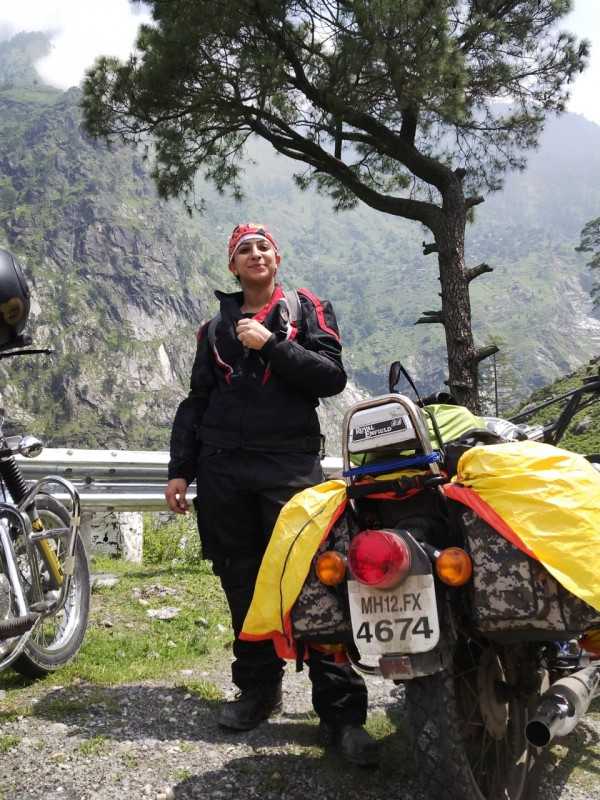
It’s not a marathon unless you’re applying for the saddle sore or bum burner! Know when your bike & body need a break & stop & rest for a few minutes every few kms or every few hours depending on the terrain. Try not to take too many breaks but only essential, otherwise, it just breaks the riding flow. When on a break, check if you have enough water for drinking & enough fuel in the tank, so that you can plan your next break accordingly.
7. Start on a light stomach
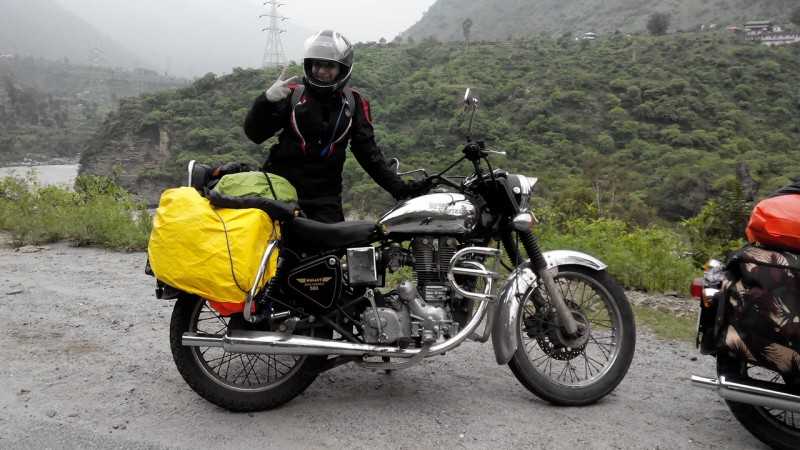
Eat light breakfast, try an early lunch & don’t overeat. Big meals take a lot of energy to digest and will make you drowsy. Besides, toilets on Indian roads are not very reliable & hard to come by. Carry some snacks & energy bars if you are the hunger pangs kinds.
8. Hair hurdle

When you have long hair, then a problem you are likely to face is those tiny strands always slipping out from under the helmet and slapping you in the face. Women motorcyclists are the worst lot with this problem. The best way is buy a bandana/ buff that you can push all your hair into before putting on the helmet. This will not only keep your hair out of the wind & your face but also help keep your helmet clean. These are not very expensive & there are a variety of prints available in the Rs.150-250 range.
Wearing a buff under my helmet helps keep my hair in place.9. Be prepared for any kind of weather
A lesson I have learnt on long motorcycle trips is that you should be prepared for rain at any point of time. Carrying raincoats & pants that will fit over your riding gear & raincoats for luggage are a must. Try & test your gear on a rainy day at home
10. Stay motivated
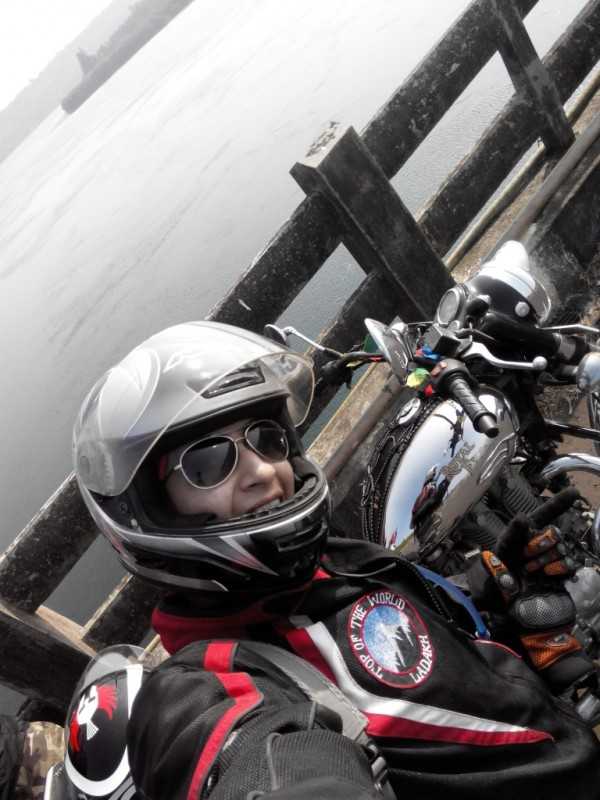
The beauty about riding a motorcycle is that once you start enjoying it, there’s no stopping. Always stay motivated & excited, even if you fall, skid or have a flat. Getting panicky & scared isn’t really useful, from what I’ve realized on my rides. Everyone makes mistakes on a motorcycle & learns from these mistakes.
11. Carry essential tools & spares
Go to a mechanic & ask him what all essential spares would you need to take on your trip for the bike. Every bike has different requirements. A general list might include spare tube, spark plugs, break & accelerator cables, engine oil, etc.
